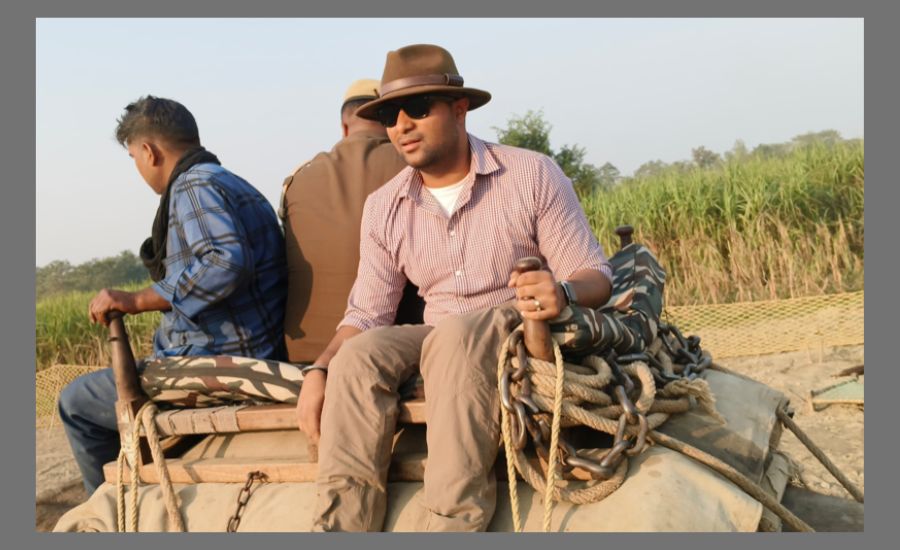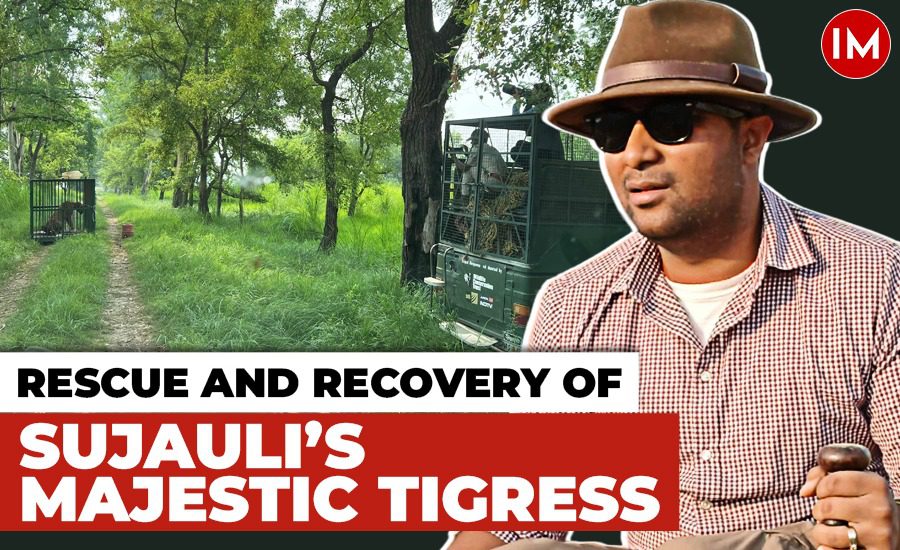In the dense jungles of Sujauli, a silent sentinel moved through the shadows—a majestic tigress, her grace now marred by a cruel wound around her neck. It was during the All India Tiger Estimation in March 2022 that a camera trap revealed this haunting image, igniting a wave of alarm among the forest officials. The sight of the tigress, a symbol of raw wilderness, ensnared by a wire, set the wheels of a rescue mission in motion.
In a conversation with Indian Masterminds, IFS officer Mr. Akash Deep Badhawan who is currently serving as DFO, Barabanki shared how she was rescued, treated, and then again released in her natural habitat.
Swiftly, ten additional camera traps were installed, their lenses trained on the injured tigress, while three dedicated monitoring teams began their relentless vigil. The severity of her condition demanded the best, prompting a call to an experienced veterinarian from Dudhwa National Park to join the sanctuary’s vet. The decision was unanimous—the tigress needed to be tranquilized to remove the wire and treat her wounds.
With the necessary permissions under the Wildlife Protection Act of 1972 and the National Tiger Conservation Authority, the operation was greenlit. The teams, led by an IFS probationer Mr. Akash Deep Badhawan, a PFS probationer, and the Range Officer, braced themselves for a task fraught with uncertainty. In the tall, concealing grasses of Sujauli, the tigress found perfect camouflage, making the mission akin to finding a needle in a haystack.
The sweltering heat of the days saw the tigress retreating to water bodies, hidden from sight, only emerging under the veil of night. The NTCA guidelines forbade tranquilization post-dusk, compressing their window of action to the early dawn hours. Each morning, as the first light kissed the horizon, the teams were in position, tracking her movements through camera traps, pugmarks, and the remains of her kills. Days turned into weeks, and the pressure mounted with each passing sunrise.

Every day was a test of endurance and patience. The grasses offered the tigress a natural shield, and despite their best efforts, she remained elusive. The tension was palpable, each failed attempt a reminder of the tigress’s deteriorating condition. Yet, the team’s resolve never wavered.
Finally, on the 56th day of this grueling mission, hope dawned. The early hours of June 1st brought a breakthrough. The tigress was spotted, and the operation commenced with precision. The tranquilizer dart found its mark, and as the mighty beast succumbed to the sedative, the team sprang into action. The wire, a cruel necklace, was carefully removed, and her wounds were tended to with meticulous care.
“Releasing the tigress back into her natural habitat was a moment of triumph. The memory of her intense gaze, as she returned to the wild, lingered as a silent acknowledgment of the team’s efforts. The words of my father echoed in my mind—”try to become the voice of voiceless creatures.” It felt as though, in that brief eye contact, the tigress conveyed her gratitude”, said the officer.
The mission, however, was far from over. Post-operation, the teams continued to monitor her health through camera trap images and direct sightings. Each update confirming her recovery was a testament to their dedication and relentless pursuit.
This was my first independent operation in wildlife management, a baptism by fire that tested every ounce of my resolve and leadership. The success of the mission was a collective victory, a reflection of the field staff’s unwavering commitment. As I recount this tale, I swell with pride—not just for the successful rescue, but for the resilience and determination displayed by my team.
The tigress of Sujauli once ensnared and wounded, now roams her territory free and healthy. Her story is a powerful reminder of the delicate balance we strive to maintain in the wild, and the profound impact we can have when we become the voice for the voiceless.





























